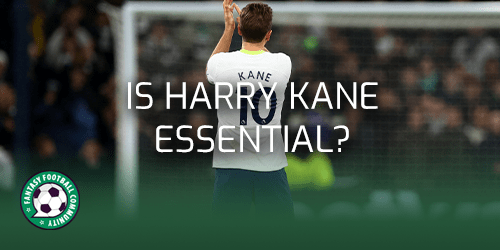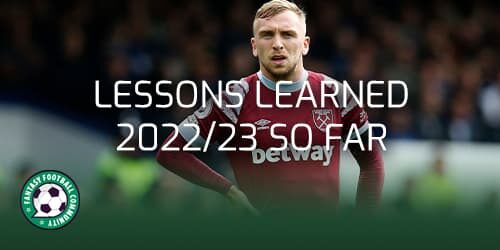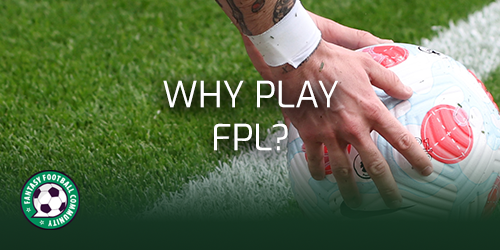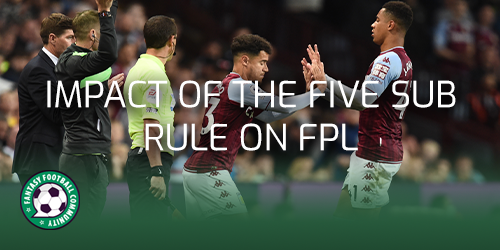Prioritising transfers and taking hits
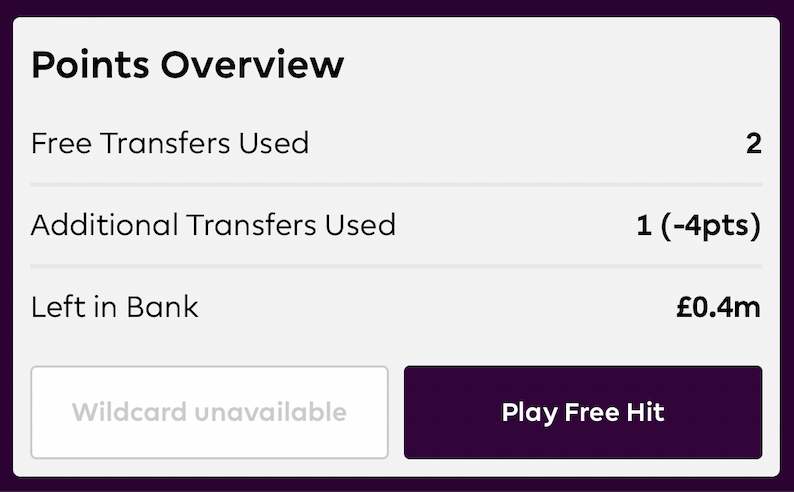
One of the key skills in FPL is knowing which transfers to make and when you should and shouldn’t take a hit. We have a look at how to make the most of your transfers and how to decide if taking a hit is right for your gameweek.
How to decide on transfers?
Look closely at the fixtures
One of the easiest ways for FPL managers to decide on a transfer strategy is to look at the fixtures. The Official FPL app and website has a fixture ticker which sorts the fixtures in to different categories depending upon how easy or difficult they are.
Websites like Fantasy Football Scout take that one step further by allowing their members to sort the season ticker by difficulty overall, for defenders or for attackers. Their season ticker is also editable so you can change how difficult a fixture is if you disagree and you can delete Gameweeks if you would prefer to look at the fixtures without one week.
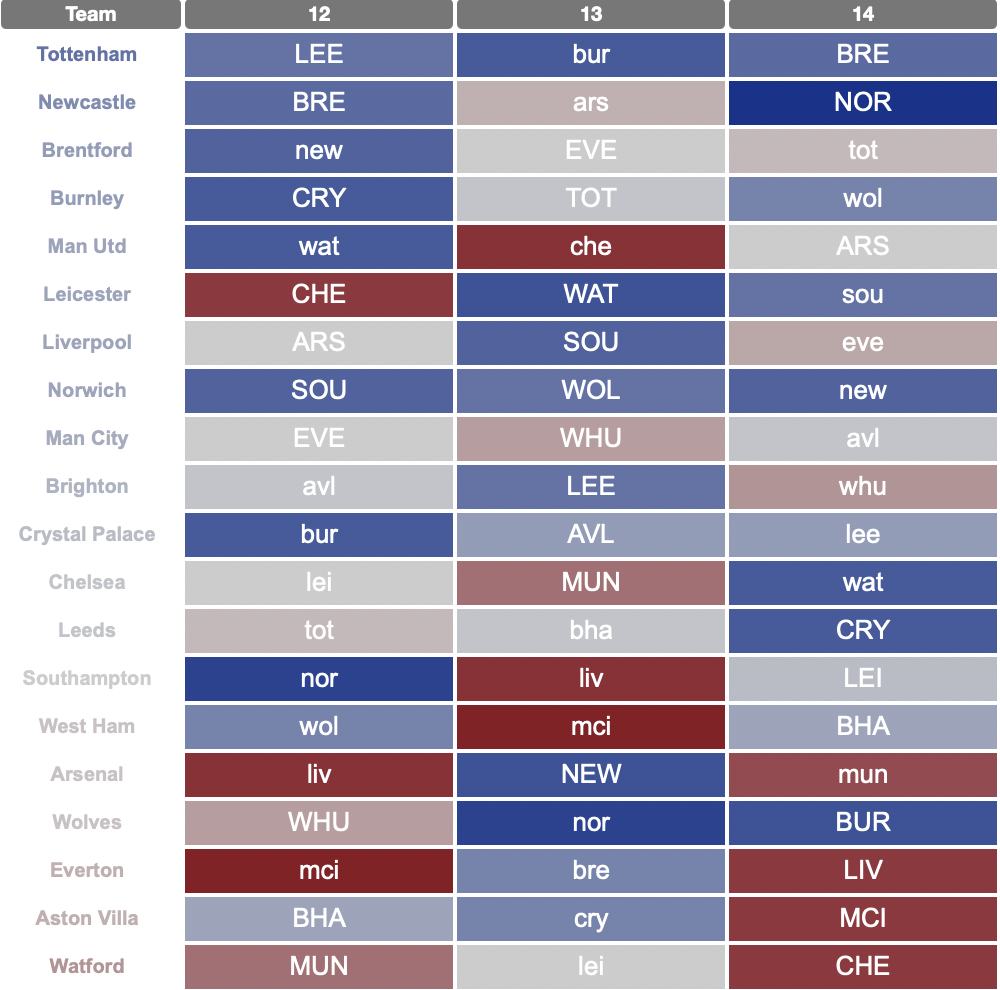
Bringing in players who have a nice run of fixtures means managers don’t have to worry about transferring them out again for the foreseeable future, which can feel like a transfer wasted, plus it means managers can get ahead of the game for popular transfers in, which might mean not having to worry about price rises too.
Who is passing the eye test?
Whilst the fixtures can give us an insight into the teams to target and player form can help us whittle down the number of potential targets we have, a key weapon in an FPL manager’s arsenal is the eye test.
Watching matches allows us to see how the teams are performing, as well as how individual players get on. Sometimes they can impress and look likely to bring points returns, at other times the underlying stats for the team look investable but the targeted player either played badly or was invisible.
For most FPL managers, finding an in-form player with good fixtures and eye test success will be their prime targets. Whilst all having all three metrics is preferable, FPL managers shouldn’t rule out players because one of these factors is missing. It is very possible that just one of these metrics is good enough to target a player, or that a mixture of fixtures, form and eye test with different weight applied, is what is needed to target the perfect transfer in.
Spurs are a good example of this. They have a good fixture run but form could be made irrelevant now that their manager has changed. Perhaps there were small signs during the eye test but not enough to go on – they are purely based on fixtures.
In-form players
Whilst players can return FPL points without ever really being in the best of form, consistent returns can be a great way to pinpoint potential FPL targets.

We have to be mindful that form can be long-term or short-term and use some judgement when picking players based on this. This season, Mohamed Salah is a prime example of a player who is in form. Salah has returned in all bar one of the opening 11 Gameweeks of the season and this explains why he is owned by over 71% of the game.
However, some players’ form can be temporary or come in waves known as purple patches. Between gameweeks 3 and 8, Jamie Vardy returned in every fixture except one, yet since then has returned three blanks. Finding the right time to invest in a player can be challenging.
Form is also used as a metric in the official game and can be used to sort the players so you can compile a watchlist of the most in-form players. However, it should always be used in conjunction with both the fixture run and the all important eye test.
Player value
FPL managers should always keep an eye on price rises and falls to ensure that they can always afford to bring in the player that they want, as well as wherever possible avoiding price drops for players that are potential transfers out.
In most cases, waiting on transfers until press conferences is advisable. However, if value changes will price managers out of a planned transfer, sometimes it is worth acting early to secure the player.
Are points hits worth it?
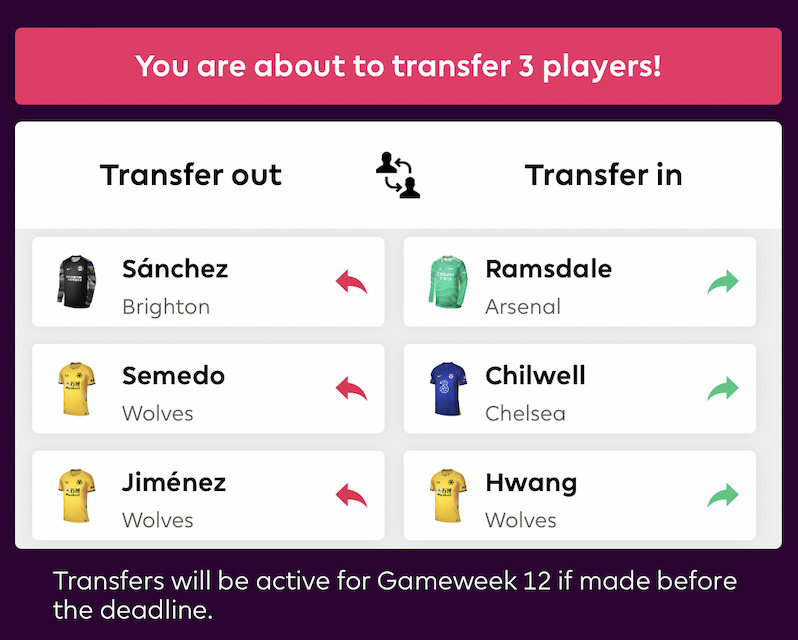
Whether to take a -4 or bigger hit will usually be personal to the individual FPL manager and their habits. However, there are some factors we should consider when deciding if the hit is worth taking.
Long term gain
Are the players you are targeting in good form?
Do they have good fixtures?
Are they in demand and likely to rise in price, therefore making it harder to purchase them in future weeks?
Taking a hit because that player has a great game that week but not many in the long term isn’t likely to be worth it. However, taking a hit for a player with a great fixture and an attractive run beyond that is much more appealing as the risk and reward element of the transfer is spread over a number of weeks rather than just one.
Managers should also consider what taking a hit means for the team as a whole.
Taking a hit to bring in two players who strengthen your squad is much more appealing than downgrading one player to upgrade another. Whilst you may benefit from the upgraded player, the negative impact could be that the other player who you have downgraded weakens the team as a whole, which could be detrimental.
Thinking about the value of the transfer this week versus waiting for next week is another factor to consider. For many managers, waiting a further week will mean that four points won’t be spent, however that means missing out on the player’s attractive gameweek. If you believe that player will immediately return more points than the value of the hit, then it is worth doing it early.
Managers should also consider the position of the player when taking a points hit. If the hit is for a defender than they will need more than just a clean sheet to make the hit worthwhile, meanwhile forwards will need at least one goal to break even. Taking points hits can work brilliantly and be a real boost to managers FPL teams. However, weighing up the pros and cons of the decision is vital before hitting the button.

